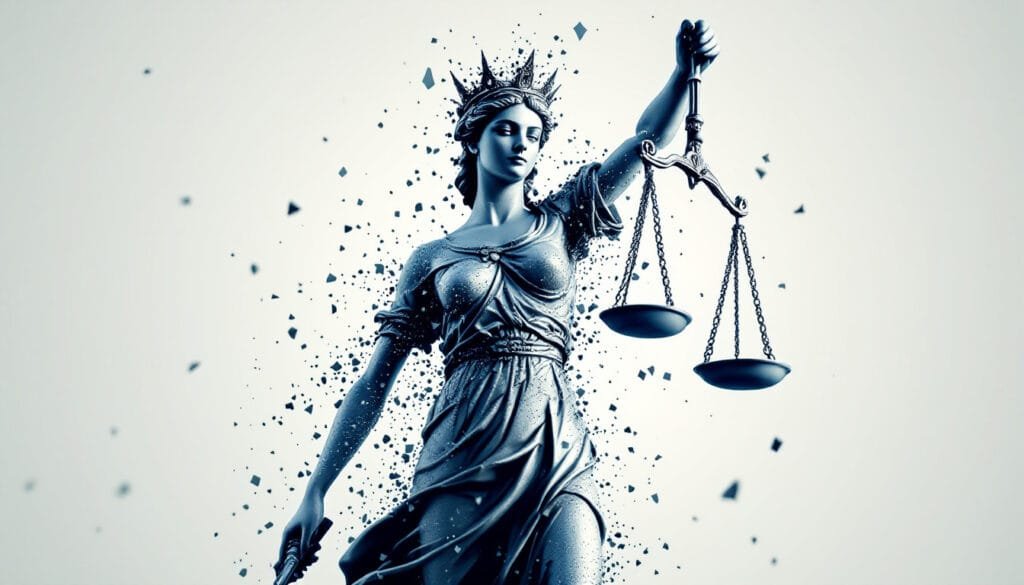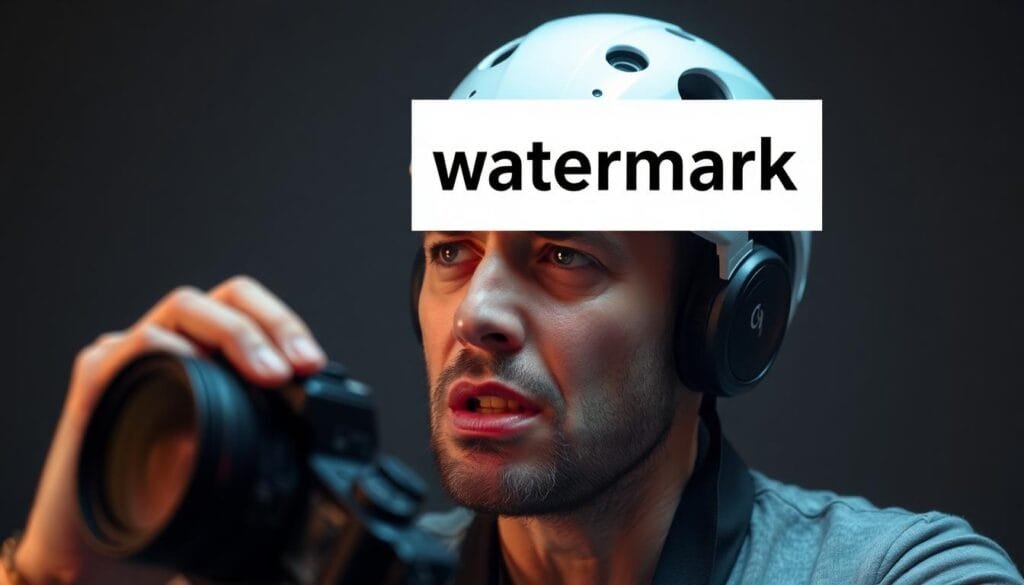So Google just dropped this experimental feature in their Gemini 2.0 Flash AI that can make watermarks vanish from images with minimal effort. Pretty cool tech, right? Well, hold on, because it’s actually stirring up a hornet’s nest of copyright and ethical debates.
This isn’t just another shiny AI trick – it’s potentially threatening the livelihood of photographers, digital artists, and stock image platforms who’ve relied on watermarks as their first line of defense against unauthorized use. I mean, imagine spending hours on a perfect shot only to have someone strip your name off it in seconds.
What Makes Gemini 2.0 Different From Other AI Tools

At its core, Gemini 2.0 is a multimodal AI system that can handle text, images, and audio. But what’s getting everyone talking is how sophisticated its image manipulation has become.
The Tech Behind the Controversy
The image processing capabilities in Gemini 2.0 are honestly impressive (even if concerning):
- It can analyze the pixels around a watermark and intelligently fill in what was underneath – kind of like when you remove an object from a photo and the software guesses what should be there
- Beyond just removing stuff, it can actually enhance image quality, making blurry photos sharper without the usual quality loss
- You can just tell it what to do in plain English – no need to learn complex editing menus or commands
I tried explaining this to my friend who’s a photographer, and he compared it to someone inventing a lock pick that works on every door. The technology itself is fascinating, but… you know where I’m going with this.
Why This Watermark Removal Thing Is Different
The thing is, Google labeled this feature “experimental,” but that hasn’t stopped people from using it through their AI Studio platform.
What makes this particularly problematic is how it works:
- It doesn’t just blur or crop out watermarks like older software – it actually rebuilds the image underneath
- After removing the watermark, it studies the surrounding image patterns to fill in the gaps, making the edit practically invisible
- In most cases, you’d need a before-and-after comparison to even notice something was changed
According to TechCrunch, users jumped on this capability almost immediately. And while Google says, “Hey, this isn’t for production use,” the genie’s already out of the bottle.
The Legal Mess This Creates

This is where things get messy. Gemini’s watermark removal feature directly challenges existing copyright laws and seems to go against what other AI companies are doing.
Wait, Isn’t This Against What Google Promised?
Okay, so here’s the weird part – just a couple years back, Google joined this White House initiative where they promised to add watermarks to AI-generated content. The whole point was transparency and preventing misuse. Now they’ve built a tool that does the exact opposite?
Meanwhile, other AI companies seem to be taking a different approach:
- OpenAI flat-out refuses to let GPT-4 remove watermarks
- Anthropic’s Claude won’t help you bypass content protections
- Google’s over here like, “Check out this cool new experimental feature!”
I’m not saying Google is being hypocritical, but… actually, wait, that’s exactly what I’m saying. It’s like they’re playing both sides of the street, and it raises serious questions about their commitment to ethical AI development.
What the Legal Experts Are Saying
Legal specialists are pointing out how this likely violates the Digital Millennium Copyright Act (DMCA), which specifically prohibits removing copyright management information – including watermarks.
According to analysis from AI’s Easy Watermark Removal Raises Copyright Concerns, tools like Gemini essentially hand people a digital eraser for copyright protections. This is particularly problematic for:
- Independent creators who don’t have legal teams or resources to chase down violations
- Stock photo companies whose entire business model relies on licensed content
- Anyone who depends on image attribution for their professional reputation
But the bigger issue is that once a watermark is gone, it becomes nearly impossible to prove where an image came from. As Legal Considerations in AI Watermark Removal explains, it undermines the entire purpose of copyright protection in digital spaces.
With the EU’s AI Act on the horizon and similar regulations being discussed in the US, tech companies might soon be held accountable for how their tools can be misused. But that doesn’t help creators who are vulnerable right now.
Real People Are Getting Hurt By This

Let’s talk about the human cost of this technology, because these aren’t just abstract concerns – they affect real people trying to make a living from their creative work.
What This Means for Photographers and Artists
For someone who makes their living through creative visual work, watermarks aren’t just a vanity thing – they’re often the difference between getting paid and getting ripped off.
I talked to a landscape photographer friend last week who explained it like this: “My watermark is basically my business card. If someone can just erase that in seconds, it’s like letting people walk into a store and take whatever they want.”
The problems creators face include:
- Their work gets used without permission or attribution
- They lose licensing fees that pay their bills
- They have no control over where their images appear or how they’re used
And for independent artists who don’t have legal teams? Good luck trying to track down and pursue every violation when your content can be modified and redistributed instantly without any trace of your name.
As The Ramifications of AI on Photography points out, we risk normalizing what’s essentially digital theft, undermining creative industries that took decades to build.
Stock Photo Companies Are in Trouble Too
Stock photo platforms like Getty Images are looking at this development with justified alarm. Their entire business model depends on people paying to license images, with watermarks serving as both protection and advertisement.
With Gemini’s capabilities, they’re facing:
- A potential collapse in licensing revenue if people can just grab watermarked preview images
- A breakdown in client trust if legitimate customers wonder why they’re paying when others aren’t
- Mounting legal costs to protect their content, even with substantial resources
This isn’t theoretical – Getty has already sued Stability AI over similar issues and, according to TechCrunch, Google’s promotion of watermark removal capabilities puts additional pressure on these platforms.
For more on how stock agencies are responding, check out Google’s AI Removal Impact on Stock Images.
It’s honestly frustrating to see technology that’s so impressive in technical terms causing such clear harm to creative professionals. And it raises the question: just because we can build something, should we?
What Google’s Doing About It (Sort Of)
Facing criticism, Google has started rolling out some protective measures and emphasizing their commitment to responsible AI. But are these efforts enough to balance innovation with ethical considerations?
SynthID and Google’s Technological Response

Google’s main answer to the watermark removal problem is something called SynthID – an invisible watermarking system. Unlike traditional visible watermarks that Gemini can easily remove, SynthID embeds digital signatures directly into the image at the pixel level.
The approach has some advantages:
- These hidden watermarks supposedly survive basic editing like resizing or format changes
- Special verification tools can detect these invisible watermarks
- It’s designed specifically to identify AI-generated content
According to DeepMind’s exploration of SynthID, this technology is more resilient than visible watermarks. But – and this is a big but – it’s still experimental and can likely be defeated by determined efforts.
Google has also mentioned making some watermarking tech open-source (Technology Review), which could help establish industry standards. But it feels a bit like closing the barn door after the horses have already escaped, doesn’t it?
How They’re Trying to Address Concerns
Beyond the tech solutions, Google keeps pointing to their AI Principles and outlining steps they’re taking to promote responsible use:
- They’ve published a Generative AI Use Policy that prohibits using their tech for illegal stuff, though how they’ll enforce this isn’t clear
- According to their Responsible AI 2024 report, they’re regularly evaluating AI tools to identify and fix potential problems
- They’re promising to educate developers about ethical AI practices
But as one researcher put it to me, “This feels like setting up a suggestion box after releasing a chainsaw without a safety guard.” Many critics agree that Google’s approach is reactive rather than preventive – addressing problems after they emerge instead of designing safeguards from the beginning.
As this analysis of Google’s AI responsibility challenges argues, the company needs to move beyond promises to meaningful protections that are baked into their products from day one.
The Path Forward: Protecting Innovation and Creators
So where do we go from here? The Gemini watermark removal controversy highlights the growing tension between pushing technology forward and protecting the people who create the content that makes these platforms valuable in the first place.
Finding balance means working on multiple fronts:
- Tech companies need to consider ethical implications before releasing powerful tools, not as an afterthought
- Lawmakers need to update regulations for digital realities without stifling innovation
- Creators should explore layered protection approaches beyond just watermarks
- Consumers need to recognize the value of supporting ethical content use
I’m not anti-innovation – some of these AI capabilities are genuinely impressive. But innovation that undermines creative livelihoods isn’t progress – it’s just destructive disruption.
Have you encountered situations where your creative work was used without permission? How do you balance excitement about new technologies with concerns about protecting intellectual property? I’d love to hear your thoughts in the comments.
Disclaimer: The Pickary Hub may contain affiliate links through which we may earn a commission, though this comes at no additional cost to users who click these links.
FAQ’s:
❓ How can I protect my images beyond watermarking? (Click to Expand)
▶ Traditional watermarks are increasingly vulnerable, so consider a multi-layered approach: embed hidden data through steganography, formally register your copyright, use blockchain verification for proving ownership, only publish lower-resolution versions publicly, and maintain comprehensive metadata that stays with your files even if visible markings are removed.
❓ Are there legal actions creators can take if their watermarked content is modified by AI?
▶ Yes – the DMCA specifically prohibits removing copyright management information (like watermarks). Document your original work carefully, register with copyright offices when possible, and start with cease-and-desist notices before considering litigation. While pursuing individual cases can be difficult, the legal protections do exist.
❓ Does using AI to remove watermarks for personal use still violate copyright?
▶ Short answer: yes. There’s a common misconception that “personal use” exempts you from copyright law, but removing a watermark without permission violates protection mechanisms regardless of whether you share the content publicly. Copyright law doesn’t typically have a “just for me” loophole.
❓ How are other tech companies addressing watermark removal capabilities in their AI systems?
▶ Most major AI companies have taken a much more cautious approach. OpenAI and Anthropic have built safeguards that prevent their models from removing watermarks, citing both ethical and legal concerns. Some are developing more sophisticated watermarking technologies specifically designed to resist AI removal attempts.
❓ What alternative business models might emerge for photographers and stock agencies?
▶ We’re likely to see a shift toward blockchain-verified ownership, NFT-based licensing systems, subscription models with exclusive content, deeper metadata integration, and stronger relationship-based business models that prioritize clients who value ethical content acquisition.






